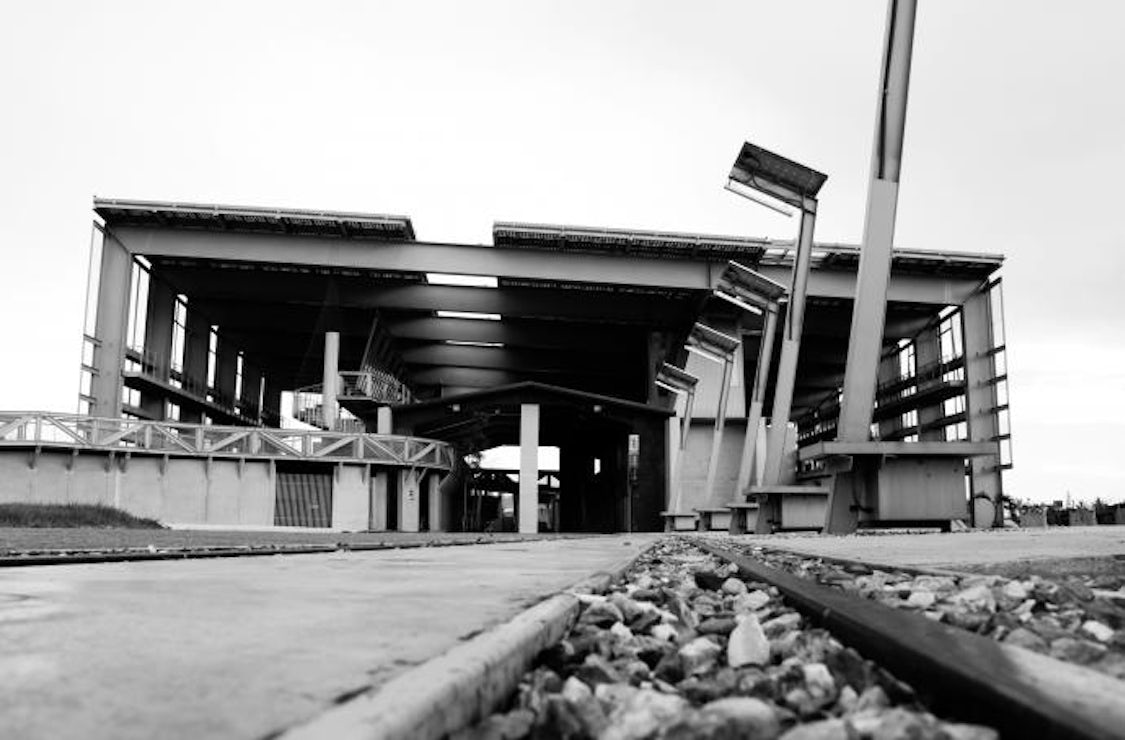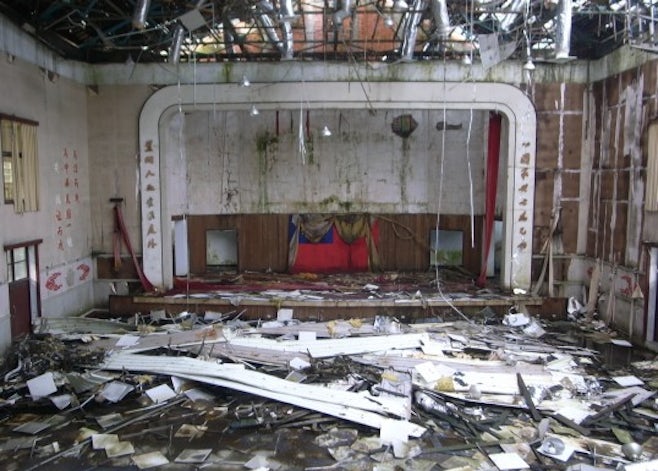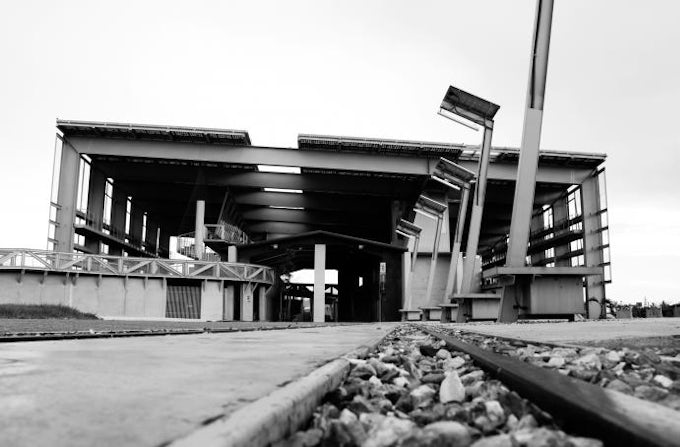
Yao Jui-chung is an indefatigable engine of the Taiwan art scene. No other singular figure can be seen to match his level of intensity or proliferation. Shortly after finishing his compulsory military service in 1997 the artist represented Taiwan at the Venice Biennale with Territory Takeover. A publisher of more than a dozen books, Yao also teaches art at Taipei National University of the Arts, curates exhibitions and is the co-founder of independent gallery VT Artsalon. He was recently described by the magazine Taiwan Panorama as the most representative figure in the realm of Taiwanese contemporary art.01
Yao’s art is marked by its consistent critical engagement with Taiwan’s historical past. Dealing with the dark and complex legacies of multiple waves of colonisation, it is nonetheless filled with at times slapstick humour and a stubborn insistence on the sublime. The artist first made his parodic intentions clear in 1994 when, shortly after graduating from National Institute of Art, he placed an ad in Hsiung Shih Art Monthly announcing his intention to ‘take back the mainland’. The goal, a mimicking of long-standing official Kuomintang (KMT) policy, was further stated in his 1997 photographic action series Recovering Mainland China, in which the artist appears in military uniform standing before various historic Chinese sites as a virtual one-man army ready to carry out the government policy.
In 2010 Yao sparked a national debate with The Mosquito Project, a series of photographs and book documenting a multitude of idle public facilities scattered across Taiwan. Built purely on politicians’ campaign promises with little or no regard for their actual use, the buildings have been called ‘mosquito houses’ as the insects are often their only inhabitants.02Yao exhibited photographs of some of the constructions at the 2010 Taipei Biennial. Premier Wu Den-yih promised that the problem would be resolved within one year. Yao plans to release a second book and hold an event to mark the one-year anniversary of his promise.
Ron Hanson, editor of White Fungus, a journal of experimental art based in Taiwan, speaks with Yao about Taiwan art and his projects.
RON HANSON: When you first began working as an artist in the early 1990s, Taiwan was in the midst of an incredibly optimistic period of cultural discovery, following the ending of authoritarian one-party rule and the opening up of multiple discourses on culture and identity. Can you describe what it was like being an artist in Taiwan at that time?
YAO JUI-CHUNG: There was a lot of social unrest in Taiwan, and the atmosphere was such that magnificence could potentially arise out of ruins. Nativism became a means of resisting both authority and traditional Chinese orthodoxy. As the art world offered few resources, an artist still needed tenacity, unlimited passion and conviction, and, of course, insight and a critical spirit were indispensable. I just recently realised how much I have been influenced by that era, as it still influences the way I address challenges and difficulties in contemporary society with my art.
RH: Your own personal history, like that of so many Taiwanese, is very complicated. Your father was a KMT official who came to Taiwan following the Civil War.03What has made you identify so strongly with Taiwan?
YJ: I received the national education that was compulsory in Taiwan at the time. One day I realised our familiar history textbook was filled with lies and tended to avoid difficult issues while emphasising trivial ones. This realisation, in addition to my father’s death, made me both suspicious and curious about my origins, of which I was completely ignorant. For these reasons, I use an autobiographical style and direct and act in my videos, in an attempt to peel back the layers of this onion-like conundrum which is me, my past, the memories of all Taiwanese people an a period of world history that cannot be erased.
RH: You are still addressing Taiwan’s historical and political realities in your art, but it seems the new generation of artists is less concerned with these ideas and more interested in global art trends. What do you think about the current state of Taiwan art?
YJ: Whether or not art should reflect local, historical or political conditions is not my chief concern. Every place has its own specific context, and I am only using my art to make some tragic and self-deprecating jokes about my own value within this context, while addressing the inexplicable black hole that is history. As for Taiwanese contemporary art under the sway of the internet and globalisation, I would agree that the young generation is indeed placing no effort to expand our knowledge of aesthetic and perceptual experience, and in doing so, is casting off the ‘exalted’ constructions of the previous generation. While most of this work is clever, ethereal and speaks of personal experience, this is not enough. If they cannot construct their pastiche of fragments on a fully elaborated genealogy of knowledge, then the superficiality of their project is likely to cause it to collapse.
RH: Taiwan’s political and social history has developed so quickly in the past two or three decades. Even though you are still a relatively young artist, you’ve already experienced the transition from authoritarianism to fledgling democracy, to a fully-fledged consumer society. I’m wondering what the art world was like in Taiwan during the Martial Law period compared to now.04Were artists still able to maintain an independence of spirit?
YJ: A marked characteristic of the period around the end of Martial Law was the use of art to alleviate depression and resentment caused by long-term oppression. Critiques of society, political issues, the awakening of native consciousness, folk culture and challenges to traditional aesthetics and values were all important topics in the 1990s. In the wake of more recent trends in globalisation and digital technologies, these topics have receded, and inevitably, Taiwanese contemporary art has been impacted by consumer culture with international styles replacing local aesthetics. Most younger artists are no longer interested in grand narratives, nor do they directly challenge traditional or exalted values, but rather use gentler, more personal strategies, avoid problems (both intentionally and unintentionally) and escape into their own communities. However, since the Taiwanese art market has yet to become over-hyped like China’s, most artists are still working diligently at their art and are not influenced by the market. While the scale of the market in Taiwan is small, its orientation is more extensive and many artists maintain a high degree of experimentalism and independence, creating work with high degrees of accomplishment and rigour. As a country that is continually suppressed by China and marginalised by the rest of the world, Taiwan is one place in the world that prizes creative freedom, and this is the main reason why I make art in Taiwan.

RH: In Taiwan it seems there is an obsession with the new. The focus is always on the opening of new buildings or the launching of new consumer products and gadgets. Yet your work often deals with cultural ruins, the objects or constructions that have been forgotten and left behind. What is it about ruins that fascinate you?
YJ: Instead of saying I am fascinated with ruins, it might be more accurate to say I am interested in the power operations behind them. It could also be said that I use photography to look at what the ruins have generated and construct my idea of political geography. For example, the great amount of military architecture that was constructed during the Cold War due to the cross-strait situation, and then the subsequent cutbacks in the military, resulted in many abandoned structures. The many jails for political prisoners that were constructed during this period serve as testimonials to the absurdity and severity of the Cold War period. The many abandoned factories I have documented also suggest the movement of industry to China in search of greater profits under the conditions of globalisation, and because of the unique political relationship between Taiwan and China, Taiwan is being eviscerated in the process. Recently, I organised a project requiring students to photograph abandoned public spaces throughout Taiwan, highlighting the shadow of political struggle cast over the spaces resulting from failed government policies. This project was intended to put pressure on the government and bring about changes in official policies, thus serving as a successful case of art intervening on society.
RH: You are referring to the Mosquito Project (2010). In terms of challenging government policies, it appears you were quite successful. Premier Wu Den-yih promised the public that no more of these constructions would be built. He also called a meeting with you to discuss your project. What happened during the meeting?
YJ: I arranged for students to attend a meeting at the Executive Yuan.05The students suggested that the government review its policies and release some of its disused public spaces for use by non-profit or public welfare organizations. It was also suggested that the government provide necessary assistance and gear its thinking towards professional needs (rather than merely pandering to the public) so as to attain sustainable development and not just temporary solutions. At a subsequent meeting of the Executive Yuan the premier gave a directive to carry out these matters and hold those who were negligent in their duties accountable. Of course I was optimistic about the results and expressed my support for the government’s attitude, but nonetheless, we are preparing the second Mosquito Project book in a year, which will document public structures overlooked in the previous edition. Our intention is to document recent legacies of election campaigns for future generations studying this phase of Taiwanese society.
RH: Thank you for sharing your thoughts. It will be interesting to see how the project develops.
Footnotes
-
Taiwan Panorama, Vol.36, No. 4, April 2011
-
This expression was used by the China Post news staff, ‘Government must act on houses of mosquitoes’, October 15, 2010, www.Chinapost.com.tw
-
The Kuomintang of China is the oldest and founding party in the Republic of China, and as such supports the eventual unification of Taiwan with mainland China. The KMT ruled most of China from 1928, until defeat by the Communist Party of China in 1949 forced a retreat to Taiwan , which they controlled as a single-party state.
-
Taiwan has endured the longest period of enforced Martial law in modern history. Martial law was declared in Taiwan in 1948; after the Kuomintang-led Republic of China government retreated to Taiwan and continued until 1987.
-
The Executive Yuan is that branch of the government of the Republic of China which governs Taiwan.
